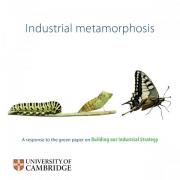The pathway to significant climate mitigation will depend on policy deployment, but in the short term public appetite for policies that influence energy demand is limited, and if applied locally they could create a competitive disadvantage which would ultimately have no effect on emissions. As a result, the immediate challenge of bringing about Use Less change is to transform the basis on which policy ideas are proposed and evaluated.
This is now a key priority for our future research and the avenues which we think are promising include:
- A new examination of the design of satisfying jobs. Government, Industry and Households share an interest in the quality of working lives, yet this currently gets little attention and the pursuit of more creative work might support a re-substitution of labour for energy.
- Many of the material inefficiencies we have identified occur “at the interface” between one business – such as a material provider – and another – such as a car maker. A more collective evaluation of how complete supply chains take choices about materials is likely to lead to new opportunities for saving.
- Many products sold today are packaged as generic commodities, with the sophisticated wrappings of marketing techniques used to persuade purchasers that a former ‘luxury’ is now a ‘necessity.’ Such goods are ‘sealed’ from user interference, and therefore inviting little participation or connection. In contrast, more personalised goods designed for participation might foster a different and more satisfying form of “user-ship”
In the UK, recent policy on industry has been reactive not proactive: in response to a crisis, ministers and civil servants seem ‘quick fix’ solutions usually by aiming to support incumbent large industries. This supports an inertia, where in contrast it would be possible to stimulate a wider participation in developing an expanded basket of policy options ready for evaluation as each policy crisis arises.
Political will to deploy new policies depends largely on public agendas and these are, above all, set by television. Yet the bulk materials currently have little interest for programme makers and it is difficult to create compelling programmes about climate change, which lacks a location, a hero or villain and an aspirational denouement. New creativity may find new means to re-connect the public to the materials that sustain them.
New technologies which begin with laboratory discoveries go through a development process to become widespread products, and this process is often described by Motorola’s famous “Technology Readiness Levels.” In parallel, in preparing for widespread adoption of Use Less living, we can imagine a scale of “Societal Readiness Levels” where demand reduction is currently only at the very earliest stages. Above all, we need to build experience of living well with less material, and a key activity for us and others working in this area, is to stimulate demonstrator projects.

